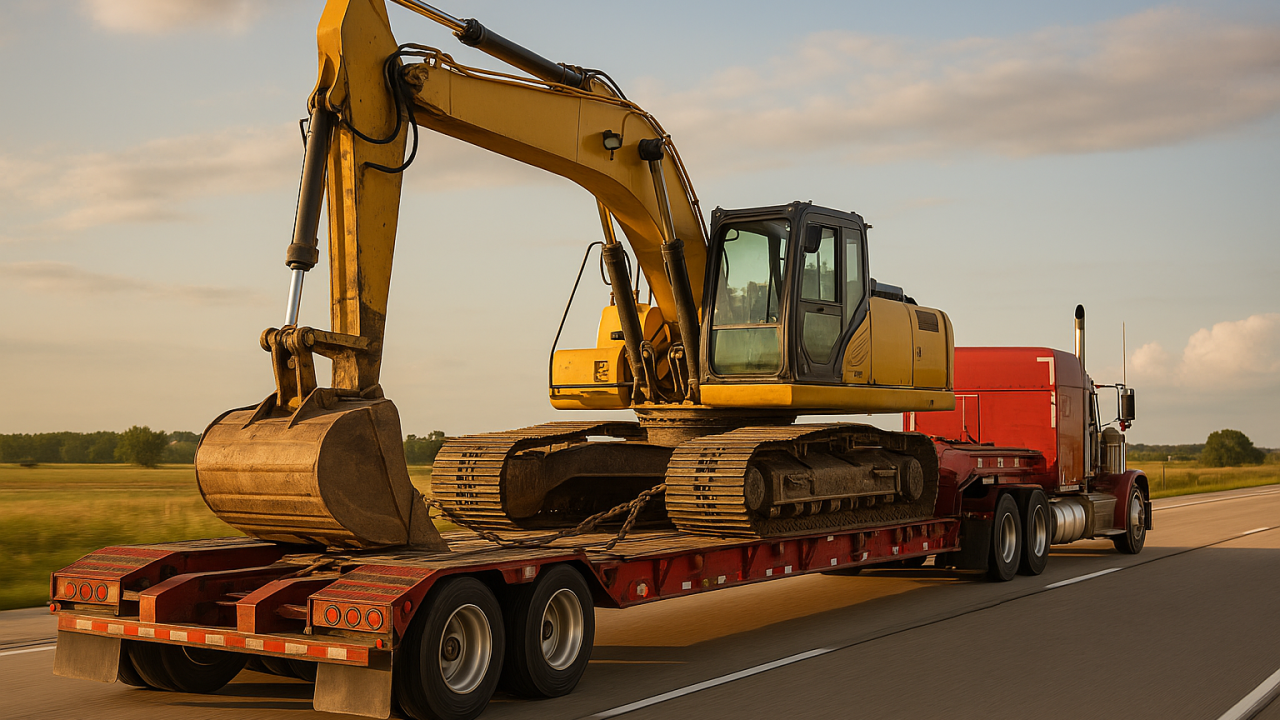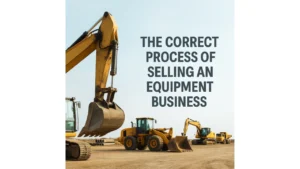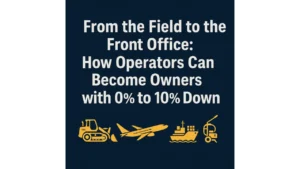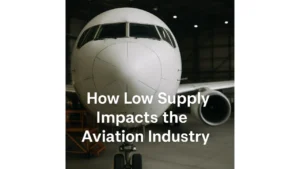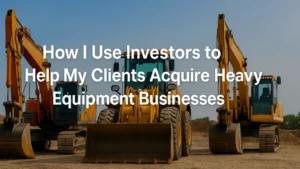When you’re buying, repairing, and flipping heavy equipment or even scaling your own fleet the first instinct is to focus on purchase price and resale value. That’s understandable. But the real cost trap? Logistics.
Transporting heavy equipment in Florida is expensive, complex, and often overlooked until it quietly wipes out your margin. And if you’re raising capital, deploying investor funds, or simply planning growth, not accounting for transport cost up front is how you turn a great deal into a bad one.
In this breakdown, I’ll walk you through what it really costs to move different types of machines in Florida, who the key players are, and how to budget transportation into your capital structure from day one—so your profits are protected, not eaten away later.
The Hidden Cost Curve of Heavy Equipment Transport
Transporting heavy machinery in Florida typically ranges from $2.00 to $5.00 per mile, depending on:
- Weight & Dimensions (overweight or over-width? Add permits.)
- Trailer Type (lowboy, RGN, or step-deck)
- Route Complexity (urban congestion, bridge clearances)
- Escort Vehicles (required over 12 ft wide in many cases)
- Fuel Surcharges & Permit Fees
- Time Sensitivity (last-minute moves cost more)
Most operators guess this number—or worse, ignore it entirely—until they’re scrambling to move a dozer on a Friday with no permit or no truck available.
If you’re flipping 10 machines, or scaling from 5 to 30, these logistics aren’t small line items. They’re major P&L factors that need to be baked into your capital deployment plan.
Example Costs: 3 Machines, 3 Routes
Here’s what real-world transport costs look like for three common heavy machines within Florida and nearby states:
1. CAT 320 Excavator (Mid-Size Class)
- Weight: 48,000 lbs
- Move: Jacksonville to Tampa (200 miles)
- Trailer: Lowboy
- Permits: Usually not required unless oversized with attachments
- Cost Estimate: $1,200 – $1,500
Capital Note: When budgeting a buy-repair-sell operation, I’d allocate $1,500 transport for a unit like this just to ensure margin protection.
2. CAT D8 Bulldozer (Large Class)
- Weight: 85,000 lbs
- Move: Miami to Orlando (250 miles)
- Trailer: RGN with booster axle
- Permits: Oversize + overweight; often requires 1 escort
- Cost Estimate: $2,800 – $3,200
Capital Note: This machine eats profit if transport isn’t planned. Repairs alone don’t cap risk—you need control over how it moves and lands.
3. Komatsu WA270 Wheel Loader
- Weight: 28,000 lbs
- Move: Lakeland, FL to Savannah, GA (330 miles)
- Trailer: Step deck
- Permits: None if under height/width limits
- Cost Estimate: $1,500 – $2,000
Capital Note: These lighter machines are easier to move, but don’t assume “cheaper” means “safe.” Always confirm route-specific height clearance and road restrictions.
Top Heavy Equipment Transporters in Florida
If you’re working with an MRO shop, auction house, or yard, these are among the most active and reliable haulers operating in Florida:
1. Heavy Haulers
- Known for oversized and specialty loads
- Nationwide with strong FL coverage
- heavyhaulers.com
2. We Will Transport It
- Florida-based with fast turnaround
- Offers lowboys, RGNs, pilot escorts
- wewilltransportit.com
3. Freedom Heavy Haul
- Great for compliance-heavy or long-haul loads
- Transparent with permitting assistance
- freedomheavyhaul.com
4. A1 Auto Transport (Heavy Equipment Division)
- Often lower cost on shorter runs
- Flexible for out-of-state deals
- a1autotransport.com
Why You Budget Transport First—Not Last
When I help operators raise or structure capital—whether it’s $3 million or $10 million—we budget transportation before we budget marketing, payroll, or growth plans.
Here’s why:
- It’s a fixed cost that compounds: If you flip 20 machines a year and lose $1,000 per move by mispricing logistics, that’s $20,000 off your profit line enough to sink a new operator.
- Delays create holding costs: The longer a machine sits waiting for permits or a hauler, the more your return on capital dies.
- Poor planning breaks trust: If you’re syndicating capital or using investor funds, transparency on logistics matters. Investors want to know every step is accounted for including how a dozer gets from point A to point B.
Smart Transport = Margin Defense
Operators don’t fail because they buy bad equipment—they fail because they don’t anticipate the true cost of handling it. And transportation is a big part of that.
You don’t need to run a logistics company. But you do need to build one into your budget.
Plan for:
- Round-trip transport (if doing repairs off-site)
- Emergency or fast-move fees
- Permit variance between cities (Tampa ≠ Orlando)
- Fuel or labor spikes during peak construction season
Final Word: Know What Moves You—and What It Costs
At Strategic Solvers, we build capital structures that anticipate the real costs of execution—from purchase to repair to delivery. If you’re scaling from 5 to 30 machines or flipping assets for profit, you need a margin buffer that protects your upside and defends your investors.
Transport isn’t a footnote. It’s a cost center. Treat it that way, and you’ll protect everything else you’ve worked to build.
Need help structuring your capital raise to include logistics, repairs, and real operational costs? Let’s talk. Because every good deal starts with a strong plan—and moves with one too
Gustavo Lopez
#HeavyMoves #EquipmentFlipping #FleetScaling #MROSolutions #UH-60


